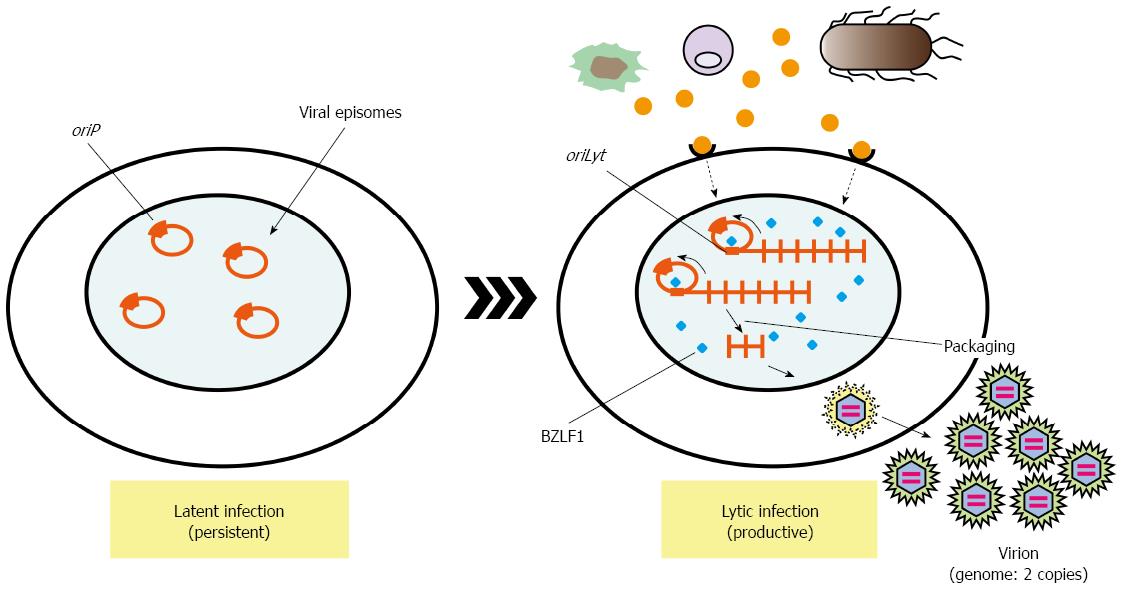Copyright
©The Author(s) 2015.
World J Gastroenterol. Oct 28, 2015; 21(40): 11450-11457
Published online Oct 28, 2015. doi: 10.3748/wjg.v21.i40.11450
Published online Oct 28, 2015. doi: 10.3748/wjg.v21.i40.11450
Figure 2 Lytic activation of Epstein-Barr virus by inflammatory product.
After primary infection of EBV, the infected cells undergo prelatent cycles in which only immediate-early and early genes are expressed with no viral production. This transient lytic state is silenced, and latent infection is persistently established by expressing only limited numbers of latent genes. The latent infection may undergo the lytic cycle, in which viral late gene expression, viral genome replication, and production of the progeny virus (virion) can be observed. BZLF1 is a molecular switch for EBV reactivation from latent infection. And various signaling pathways activate cis-acting elements in the BZLF1 promoter[47, 48]. Although viral latent gene such as LMP1 can also strongly expressed on lytic infection, which sometimes promote cell proliferation by enhancing cell signaling, modulating immune system, and inducing genomic instability. oriP is a latent origin for viral genome replication. BZLF1 is a transactivator of virus replication, which forms homodimers and binds to oriLyt, origin for EBV DNA replication in lytic infection. EBV: Epstein-Barr virus.
- Citation: Iizasa H, Ishihara S, Richardo T, Kanehiro Y, Yoshiyama H. Dysbiotic infection in the stomach. World J Gastroenterol 2015; 21(40): 11450-11457
- URL: https://www.wjgnet.com/1007-9327/full/v21/i40/11450.htm
- DOI: https://dx.doi.org/10.3748/wjg.v21.i40.11450









